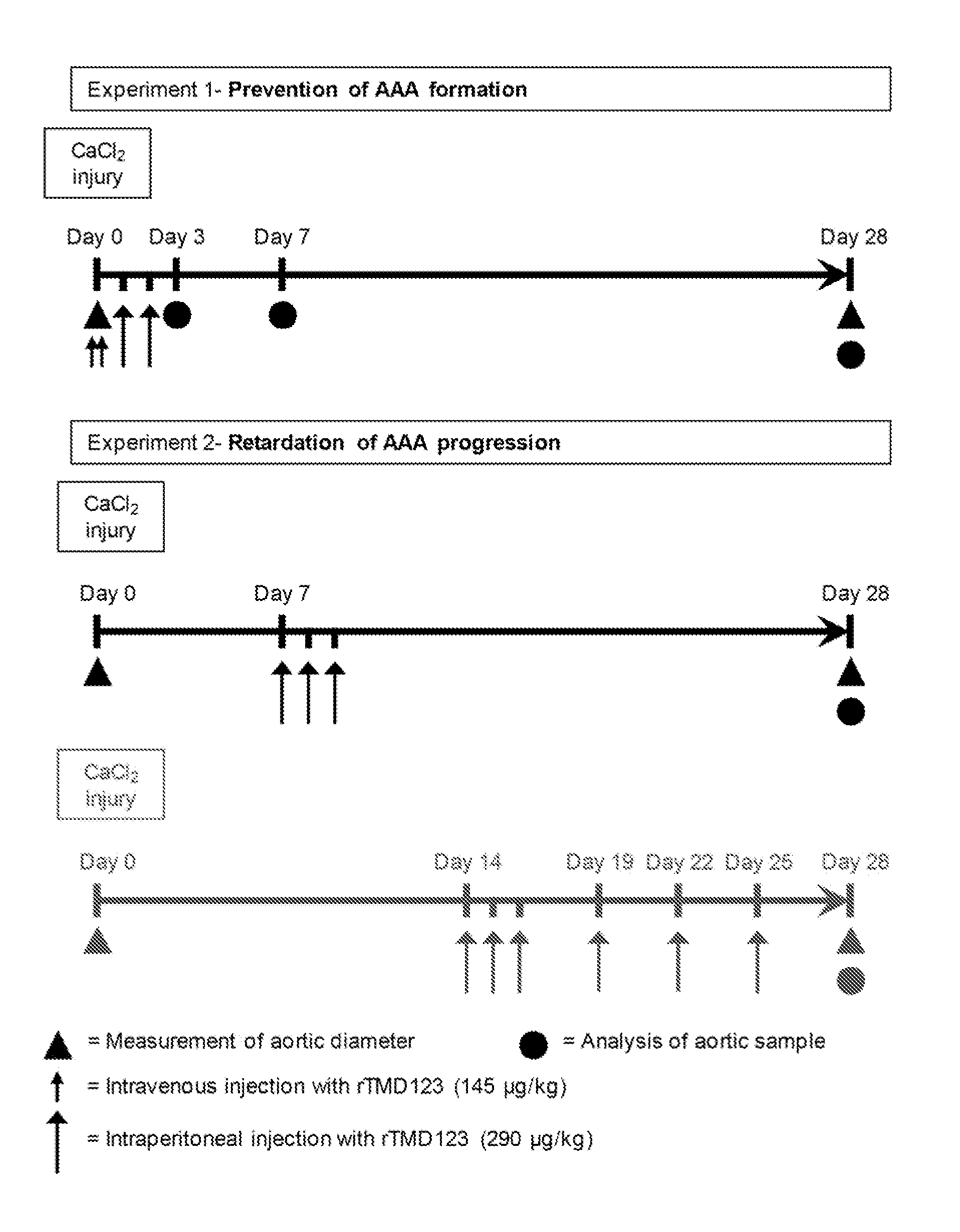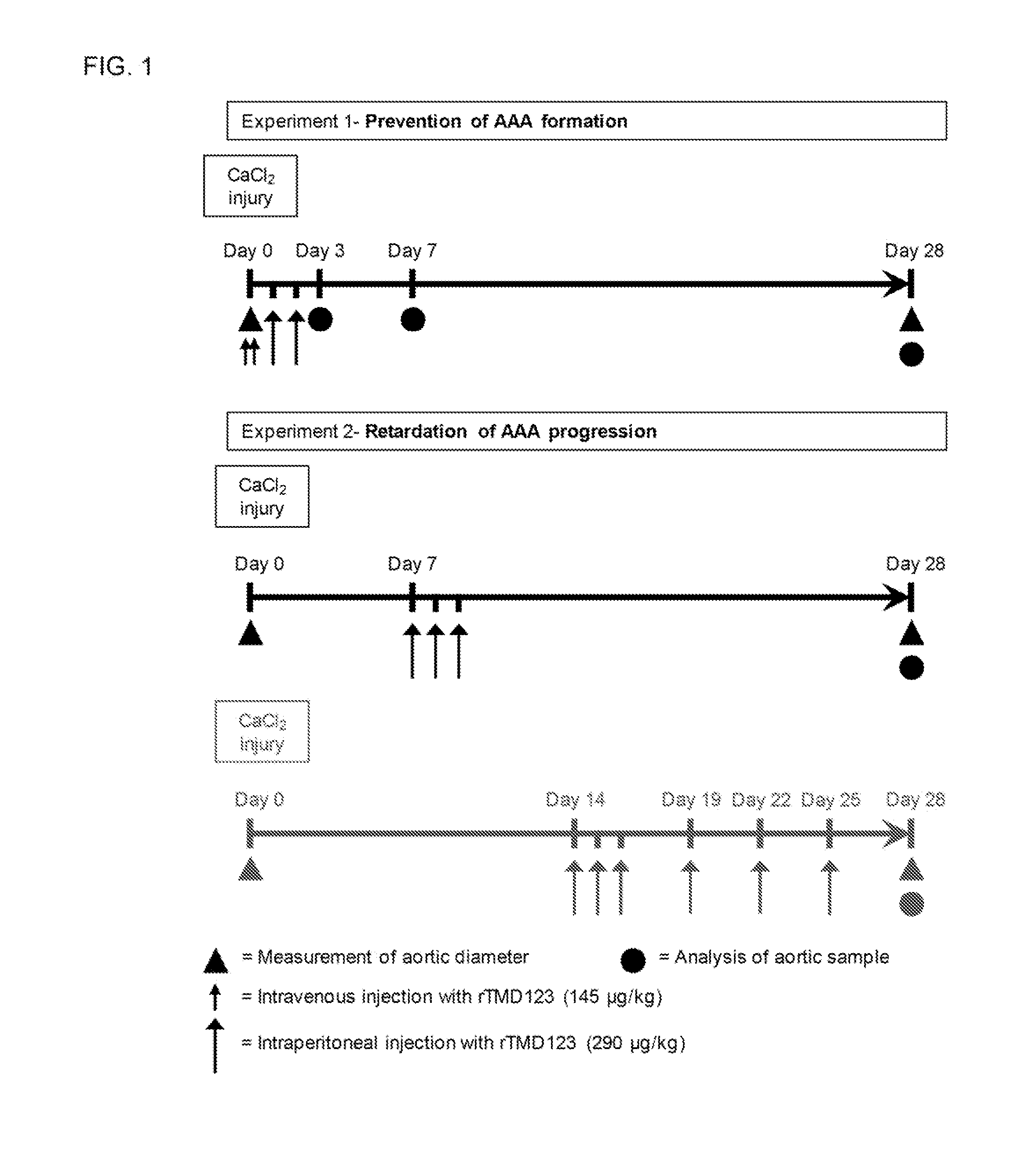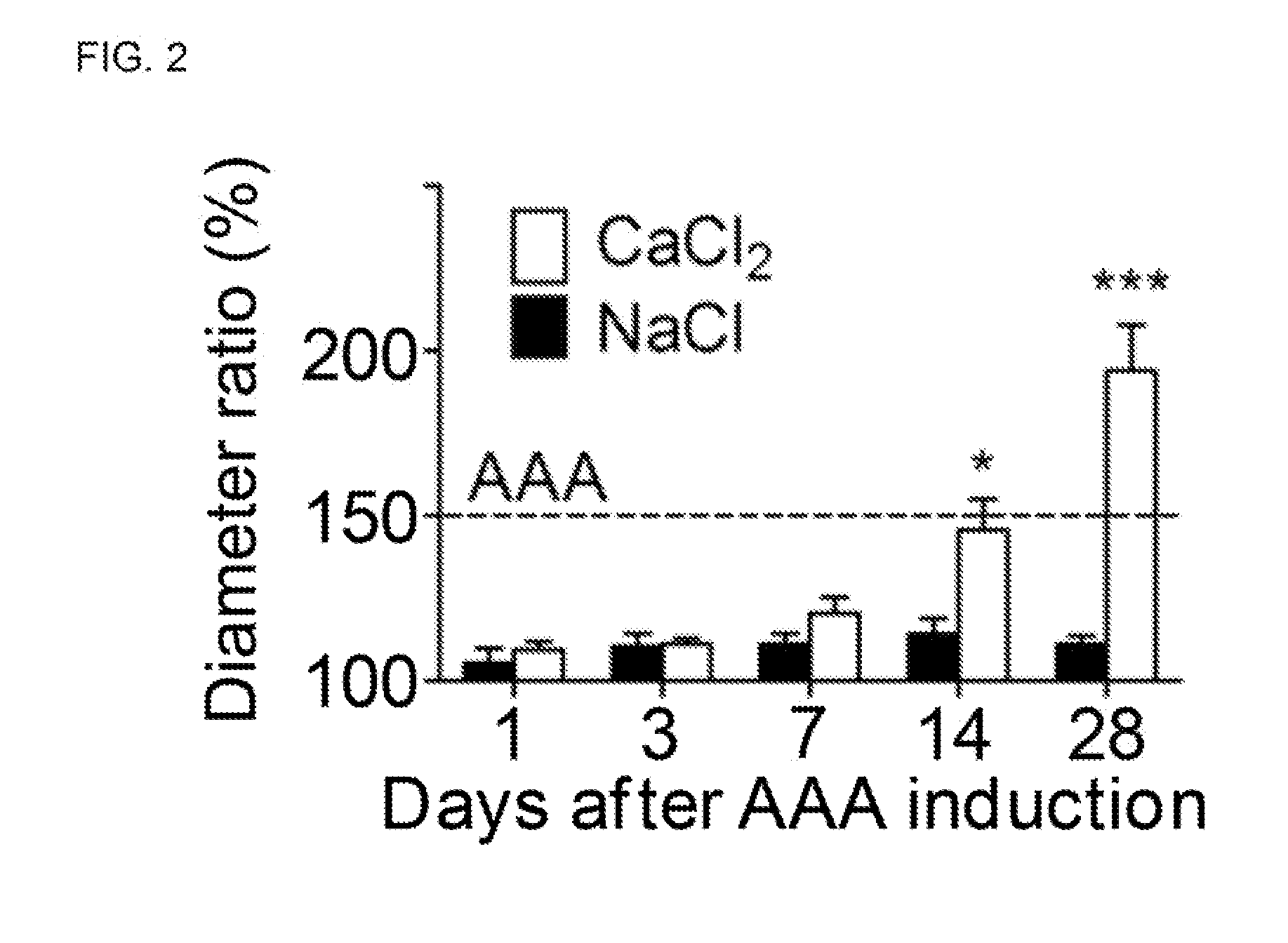Pharmacological treatment of aortic aneurysm development
a technology for aortic aneurysms and treatment methods, which is applied in the field of aortic aneurysms, can solve the problems of unaddressed need, limited treatment options, and inability of doctors to alter the natural history of aneurysm development with non-invasive approaches, and achieve the effect of preventing formation and/or reducing the number of patients
- Summary
- Abstract
- Description
- Claims
- Application Information
AI Technical Summary
Benefits of technology
Problems solved by technology
Method used
Image
Examples
example 1
Prevention of AAA Formation
[0045]To evaluate whether rTMD123 is effective in the prevention of AAA formation induced by CaCl2 (FIG. 1, Experiment 1), mice were treated with rTMD123 (AAA-rTM group; intravenous injection with rTMD123 [145 μg / kg] in 0.1 ml PBS immediately before and after CaCl2 application, then intraperitoneal injection with rTMD123 [290 μg / kg] in 0.2 ml PBS once a day in the following two days or the same volume of phosphate buffered saline (PBS group). The diameter change and histological morphology was evaluated 28 day after AAA induction. FIG. 2 shows aortic diameter changes in the mice over the period of 28 days after CaCl2 induction.
[0046]Twenty-eight days after AAA induction, the aortic diameter increase relative to initial diameter was 9% in sham, 98% in AAA-PBS group mice, and 13% in AAA-rTM group mice in average (FIGS. 3A, B). At this time, 25 of 29 mice (86.2%) exhibited aneurysms in AAA-PBS group, and none of 30 mice were aneurysmal in AAA-rTM group (P0.05...
example 2
Retardation of AAA Progression
[0048]Because rTMD123 effectively prevented CaCl2-induced AAA formation, the effectiveness of post-treatment with rTMD123 was further evaluated in the CaCl2-induced model (FIG. 1, Experiment 2). The experiment 2 was divided into two parts.
[0049]In the first part of Experiment 2, the effectiveness of early post-treatment with rTMD123 was evaluated. Seven days after periaortic application of CaCl2, mice were administrated rTMD123 (AAA-rTMp group; intraperitoneal injection with rTMD123 [290 μg / kg] in 0.2 ml PBS once a day for 3 successive days) or the same volume of PBS (AAA-PBSp group). The aortic diameter increase at 28 days relative to initial diameter was 7% in sham, 91% in AAA-PBSp group mice, and 18% in AAA-rTMp group mice in average (FIGS. 4A, 4B). At this time, 18 of 19 mice (94.7%) exhibited aneurysms in AAA-PBSp group, and 2 of 20 (10%) mice were aneurysmal in AAA-rTMp group (P<0.001). PBSp stands for post-treatment with PBS. rTMp stands for post...
PUM
| Property | Measurement | Unit |
|---|---|---|
| diameter | aaaaa | aaaaa |
| diameter | aaaaa | aaaaa |
| diameter | aaaaa | aaaaa |
Abstract
Description
Claims
Application Information
 Login to View More
Login to View More - R&D
- Intellectual Property
- Life Sciences
- Materials
- Tech Scout
- Unparalleled Data Quality
- Higher Quality Content
- 60% Fewer Hallucinations
Browse by: Latest US Patents, China's latest patents, Technical Efficacy Thesaurus, Application Domain, Technology Topic, Popular Technical Reports.
© 2025 PatSnap. All rights reserved.Legal|Privacy policy|Modern Slavery Act Transparency Statement|Sitemap|About US| Contact US: help@patsnap.com



